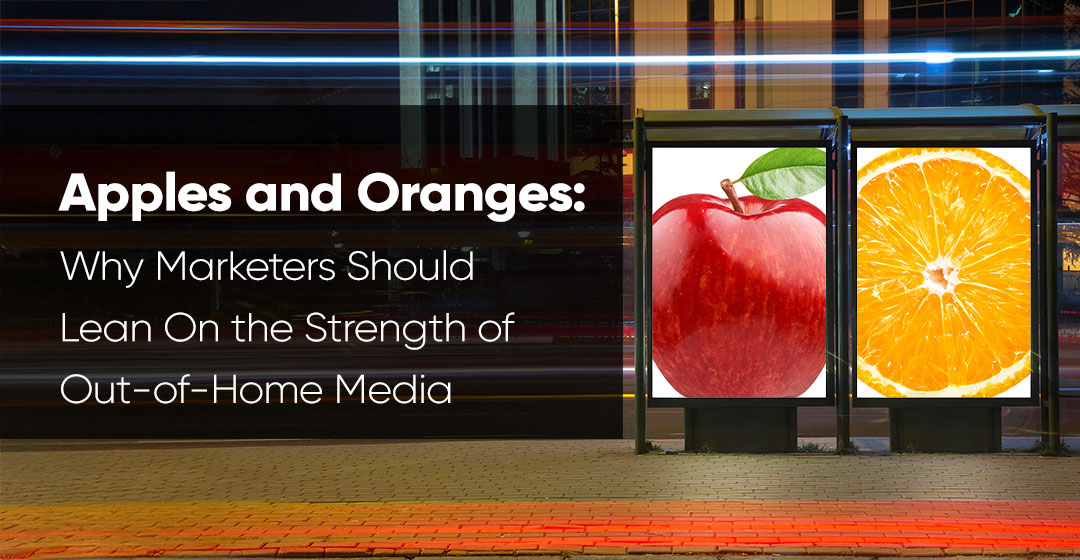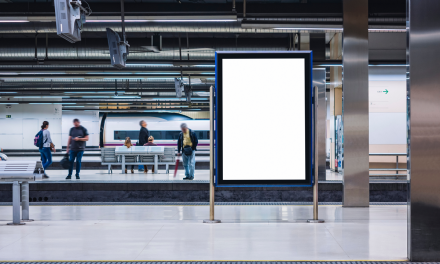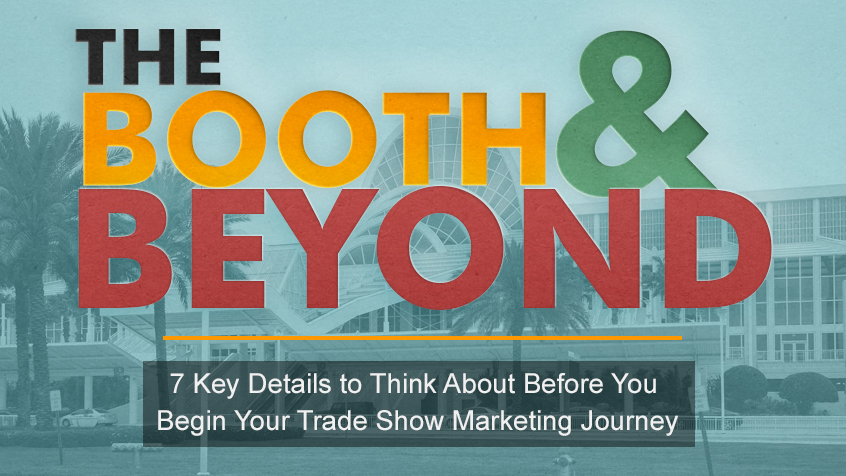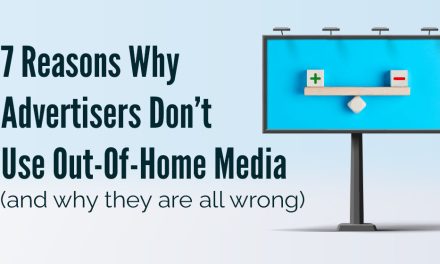We all know the phrase “comparing apples and oranges”; typically, it’s an innocuous enough mistake. However, when it comes to media planning, marketers should focus on the strength of Out-of-Home media, and not on how it doesn’t conform to other media channels.
Billboards are not banner ads, and that’s ok. In today’s hyper-digital marketing landscape, there’s a growing tendency to evaluate all advertising channels through a digital lens. However, Out-of-Home (OOH) media possesses inherent strengths that fundamentally differ from digital media.
Rather than attempting to force OOH into digital frameworks, marketers should embrace its unique qualities and leverage them strategically in conjunction with digital efforts.
For the purposes of our discussion here, OOH media will play the part of the apple, and digital media will play the part of the orange.
Our Performance Data Obsession:
There’s no denying that digital advertising has revolutionized marketing, and with good reason. Its ability to target specific individuals with near-pinpoint accuracy and provide a wealth of metrics is impressive. Click-through rates, impressions, conversions are the bread and butter of digital natives. However, in leaning too heavily on these capabilities, marketers risk undervaluing other media channels simply because they don’t fit into the restrictive digital paradigm.
Out-of-Home doesn’t function like digital—and it’s not supposed to. Applying a digital-first mindset to OOH is like looking to the apple to be your primary source of vitamin C. Will it get you there? Yes, but that’s not the most effective application.
While digital media thrives on one-to-one targeting, OOH excels on a one-to-many scale. It is a public-facing, mass-reach medium that drives awareness and engagement with diverse audiences. The strength of Out-of-Home media is that its message isn’t hidden behind an algorithm or buried under a user’s ad blockers; it’s visible on the streets, at bus stops, in airports—it’s unavoidable.
The strength of Out-of-Home media
Physical Presence That Commands Attention
OOH advertising delivers unparalleled visibility through its physical presence in the real world. Unlike digital ads that compete for attention on crowded screens, billboards and other OOH formats command attention through their sheer size and strategic placement in high-traffic areas. This physical presence creates larger-than-life impressions that are difficult to ignore, making OOH particularly effective for building brand awareness and recognition.
OOH Media Can’t Be Skipped
One of the most significant advantages of OOH is that it cannot be blocked, skipped, or viewed by bots. In an era where consumers actively avoid digital advertisements through ad blockers and subscription services, OOH remains unavoidable. It delivers consistent exposure without requiring consumers to opt in or navigate past barriers, ensuring your message reaches its intended audience.
Always On, Always Present
OOH advertising works 24/7, requiring no technology for consumer interaction. While digital ads depend on devices and connections, OOH is constantly visible to anyone passing by. This persistent presence creates multiple impressions over time, reinforcing brand messages through repeated exposure.
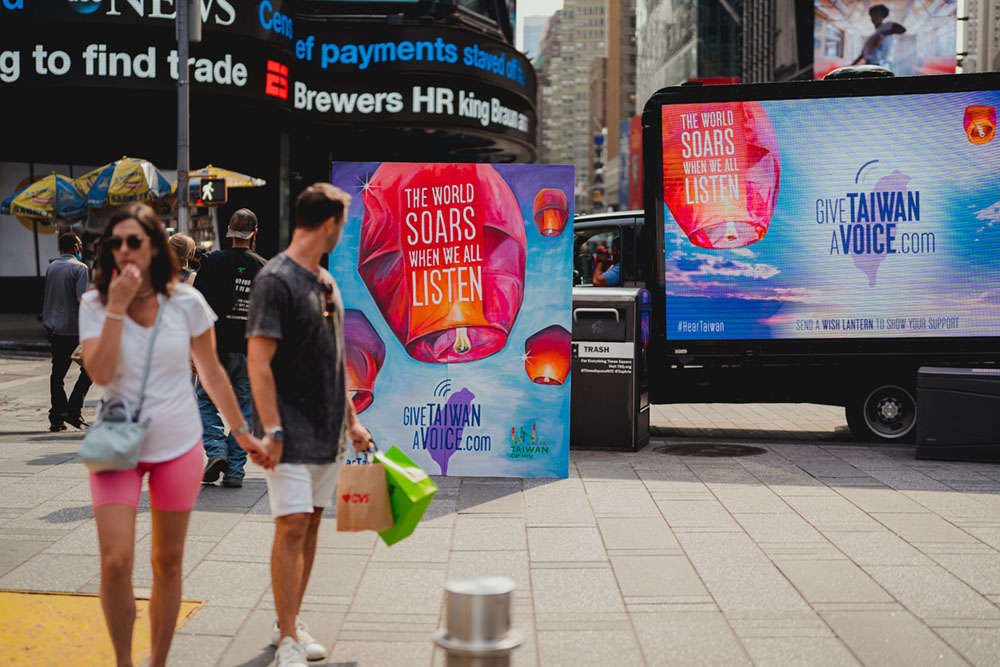
(Yes – I will keep using this image, and no, it will never stop being funny…. and effective)
The Measurement Misconception
Different Medium, Different Metrics
I’m going to say something crazy. Don’t panic….
“Not every ad has to result in a click.”
Everybody ok?
The meteoric ascendence of digital advertising has fundamentally reshaped what marketers expect regarding tracking and performance metrics. However, applying digital expectations misunderstands the strength of Out-of-Home media. OOH is not a one-to-one media format. OOH is not typically a direct-response media format; I can’t click on a bus shelter to learn more. The strength of Out-of-Home media lies in its ability to drive larger-scale, longer-term outcomes that aren’t easily captured in click-through rates or immediate conversions.
That’s not to say that OOH performance can’t be measured, but we must ensure we measure the right things with the right tools. Trying to measure the number of clicks a billboard receives is absurd on the face of it and, more importantly, overlooks what the billboard is actually doing.
The key takeaway here? If you try to measure how many segments the apple has as an important metric and compare it to the orange, it will come up short. That doesn’t mean it won’t make a great pie.
Long-Term Brand Building vs. Immediate Activation
It’s no secret that I’m a proponent of (read: “mildly obsessed with”) Field and Binet’s groundbreaking work in “The Long and the Short of It,” which showed that the long-term effects of brand building will consistently outperform short-term, sales-driven ads in terms of brand growth. If you need a refresher, Mark Ritson provides an excellent synopsis.
And while this approach is generally media-agnostic, we must acknowledge that certain inherent differences allow different media channels to excel in other areas. Digital media channels often focus on immediate activation and conversion, such as CTR, CPC, and bounce rates – mainly because they can easily measure these metrics and are, in many ways, almost point-of-purchase. System 1 also provides an excellent analysis of how this affects sales potential.

Can digital media drive brand building? Of course. Can Out-of-Home drive activation? Of course. OOH offers a wide variety of formats that can help drive lower funnel metrics. Proximity buys can help drive foot traffic to store locations. But if we’re talking about where is Out-of-Home media a powerhouse? It has to be in the long-term brand-building.
The strength of Out-of-Home media builds brand equity through consistent exposure over time. This gradual accumulation of brand familiarity increases trust and consideration when purchase decisions are made.
Oranges will last in the fridge for about a month before they become science experiments. Apples on the other hand…? Let’s say we can pick them in the fall and still be eating them in the spring.
Embracing Constraints Fuels Great Out-of-Home Creative
The Paradox of Limitations
The great American jazz composer and bassist Charles Mingus said, “Making the simple complicated is commonplace- making the complicated simple, awesomely simple- that’s creativity.”
The challenge of designing (well) for Out-of-Home is also a strength. The constraints of the format—limited space, brief exposure time, and static presentation—can actually help force designers to be more creative.
To optimize creative for OOH designers must distill messages down to their essence. They must refine them to the most immediate and impactful version, and these constraints can often fuel great creativity and more effective messaging.
Research by Kantar shows that“creative quality contributes to nearly 50% of media impact, far surpassing reach or frequency of touch-points.” Recent research by WARC and System 1 confirms that the quality of creativity correlates strongly with ROI.
By forcing advertisers to refine their creative to its most essential elements, the strength of Out-of-Home media is that it can help drive excellent creative execution.
Visual Storytelling at Scale
Growing up, one of my favorite authors was the sci-fi humorist Douglas Adams. In his most well-known work, “The Hitchhikers Guide to the Galaxy,” he says, “Space is big. You just won’t believe how vastly, hugely, mind-bogglingly big it is. I mean, you may think it’s a long way down the road to the chemist’s, but that’s just peanuts to space.”
The same could be said of Out-of-Home.
Not all, to be sure, but many OOH spaces are just overwhelmingly massive. Their ability to dominate the skyline is unmatched.
OOH offers a unique canvas for visual storytelling, creating emotional connections with viewers. The large format allows brands to make bold visual statements that resonate with audiences and create lasting impressions. The strength of Out-of-Home media advertising media is big, bold, and powerful, with a variety of touchpoints that deliver a larger-than-life impact.
Again, this is not to disparage what digital media can do, but when we try to force OOH into a digital paradigm, it’s easy to lose sight of the impact that scale can provide.
The Trust Advantage
The strength of Out-of-Home Media in Consumer Perception and Favorability
OOH advertising enjoys high consumer favorability compared to many digital formats. It’s perceived as less intrusive and more trustworthy, in part because it integrates into the environment rather than interrupting content consumption. According to search results, OOH media is tied at 55% consumer favorability among U.S. adults, comparable to print and higher than TV.

Strategic Placement in the Marketing Mix
OOH as a Digital Amplifier
Rather than competing with digital initiatives, OOH can significantly amplify their effectiveness. Studies show that Out-of-Home media can enhance engagement with digital media channels. This amplification effect makes other media budgets work harder; it’s a force multiplier. The strength of Out-of-Home media is complimentary; it’s not “either, or”.
OOH media boosts the effectiveness of:
- Display Ads by 18%
- Online Video by 45%
- Paid Social by 20%
- Paid Search by 54%
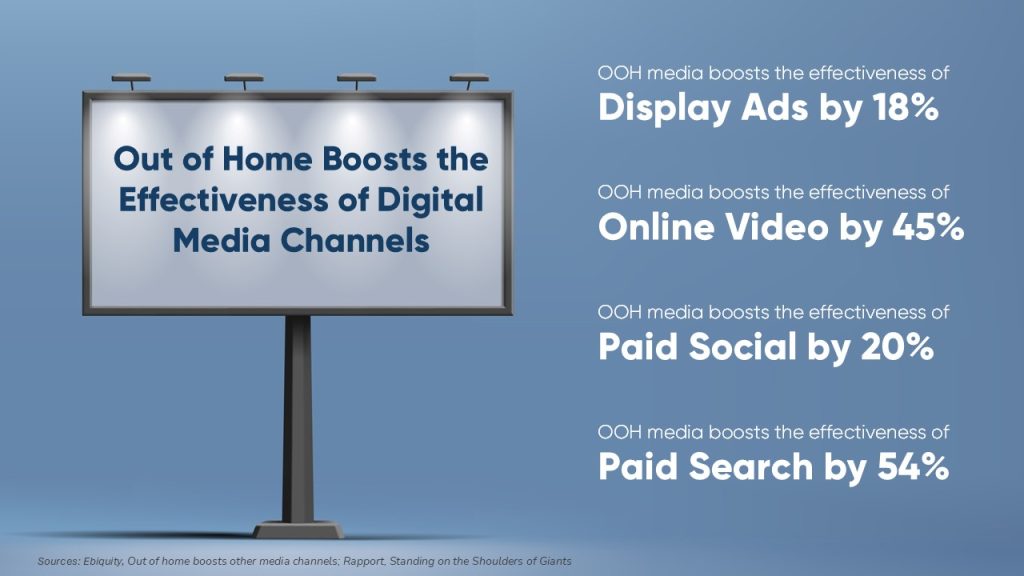
Bridging Physical and Digital Experiences
I’m sorry – I refuse to say “phygital”. But…
The most effective marketing campaigns are omni-channel. They utilize various media to reach consumers at different points, based on the campaign’s overall goals. OOH can create awareness and interest that digital can then convert and nurture. It can also act as a feeder. By geofencing Out-of-Home media, digital marketers can target an audience they know has already been exposed to the brand and is more likely to engage with digital media.
From a chef’s perspective, both apples and oranges are indispensable in the kitchen but cater to different culinary needs. Apples excel in their ability to adapt across textures (crisp or tender) and balance flavors in both sweet and savory dishes. Oranges shine in brightening dishes with acidity and pair beautifully with bold flavors. But you won’t find a chef trying to make an apple do an orange’s job. Which leads me to…
Leveraging Location-Based Relevance
Contextual Targeting Based IRL Behaviors
The French gastronome Brillat-Savarin famously said: “Tell me what you eat and I will tell you who you are.”
When it comes to media and advertising, I would say, “Tell me where you go, and I will tell you who you are”. (Full disclosure: I would swear that Rishad Tobaccowala said something very similar at an OAAA conference a few years ago, and I certainly don’t want to take credit for his brilliance, but I’ll be damned if I can find it – if anyone remembers, please let me know!)
OOH excels at delivering contextually relevant messages based on physical location. Examining where people go reveals a great deal about who they are – their interests, lifestyle, hobbies, and so on. This ability to reach consumers with messaging related to their immediate environment creates powerful connections.
The Strength of Out-of-Home Media for Hyperlocal Marketing
Proximity is the first use case and the driving force behind the original development of Out-of-Home. There’s great power in “Hungry? Great Food, Next Exit”. It was true then, and it’s still true today.
For local businesses, OOH offers an unmatched ability to precisely target specific geographic areas. This capability makes it particularly effective for driving foot traffic and building community presence. It can also serve as the last point of contact on the path to purchase that isn’t always available on digital media.
Conclusion: The Strength of Out-of-Home Media Stands On Its Own
The most successful marketers recognize that Out-of-Home and digital are complementary channels with different strengths, not competing alternatives. By embracing the strength of Out-of-Home media for what it is—a powerful awareness and brand-building medium with a unique physical presence—rather than trying to force it to behave like digital media and, more importantly, be measured like digital media, marketers can create more effective integrated campaigns that leverage the best of both worlds.
Back in 2007, when the iPhone was introduced, TV ad budgets accounted for about 43% of the media spend. Print was around 37%. Digital was 7%. Fast forward to 2025, and projections are that digital will account for about 75%. And yet, during that time, OOH has remained relatively stable.
That’s because it’s very good at what it does. Honestly, this has more to do with self-confidence than anything else. Be proud of what OOH can do; shout it from the rooftops. Out-of-home doesn’t need to chase digital media’s strengths to stay relevant; it needs to lean in on what it does well.
OOH brings undeniable strengths to the marketing mix: unavoidable visibility, trusted presence, emotional impact, and the ability to amplify other media channels. Rather than diluting these advantages by attempting to make OOH function like digital media, marketers should capitalize on them while utilizing digital channels for what they do best: one-to-one targeting, interaction, and conversion.
Ultimately, it’s not about choosing between apples and oranges but recognizing that a healthy marketing diet needs both.

